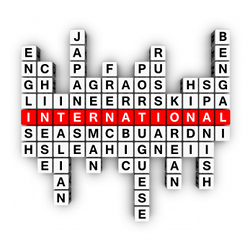
When my clients at Matrix Group talk about a multilingual strategy, they’re usually talking about Spanish, maybe French. Several have recently taken the dive and are publishing web content in Chinese, Arabic and Russian. But the IKEA instructions make me think that here in the US, we have got to make a HUGE commitment to being a heck of a lot more global and multilingual. Check this out: the little brochure that came with my new pillow has care instructions in 31 languages, including Magyar, Serbian and Bahasa Malaysia! If you visit IKEA.com, you have a choice of 41 sites in probably 31 languages (at least according to my count!).
Clearly, global brands like IKEA must adopt a multilingual strategy in order to thrive in the world economy. But I wonder how many US brands have a web presence in 31 languages or more?
A multilingual strategy like that adopted by IKEA is clearly not possible nor necessary for all companies or brands. I tell my clients that if they want to create a site in another language, they need to be able to respond to the inevitable e-mails, questions and complaints in that language. They also need to think about not just creating a static site in another language, but having an ongoing plan to post news and updates.
Is Google Translate an option? Maybe. But here’s something to consider. When Matrix Group was designing its holiday card last year, one of our designers plugged Happy Holidays into Google Translate and then cheerfully put the resulting translations into the comp. Trouble is, Happy Holidays doesn’t really translate well into all languages. We might say Happy Holidays in the US as a general holiday greeting, but in the Philippines, you say Maligayang Pasko, or Merry Christmas. Google’s translation of Happy Holidays was a hilarious Happy Vacation.
So hats off to IKEA for its global, multilingual strategy. And hey, IKEA recently reported a 10.3% jump in net profit for the year ending August 31. Could there be a connection?



2 replies on “Now That’s What I Call a Multilingual Strategy!”
As I was reading your blog post, one company who I believe does this very well is McDonald’s. When I was in India this past summer, I was so impressed with how McDonald’s integrated itself in Indian culture. When the company first entered India, it somewhat failed. As the Indian economy has grown, the company has continued to thrive. And, I think a lot of it has to do with the way it has positioned itself and targeted. From the commercials to billboards and posters, it is targeting younger generations like college students, young couples and families. Also, McDonald’s doesn’t position itself as a fast food restaurant there, but a place to hang out, which is what is attracting many people to dine at them. So, in my opinion, it has really done well in that it has branded itself in the country and connected with its customers.
@Sherrie Bakshi: It must be a boring place if McDonald’s is the place to “hang out”.